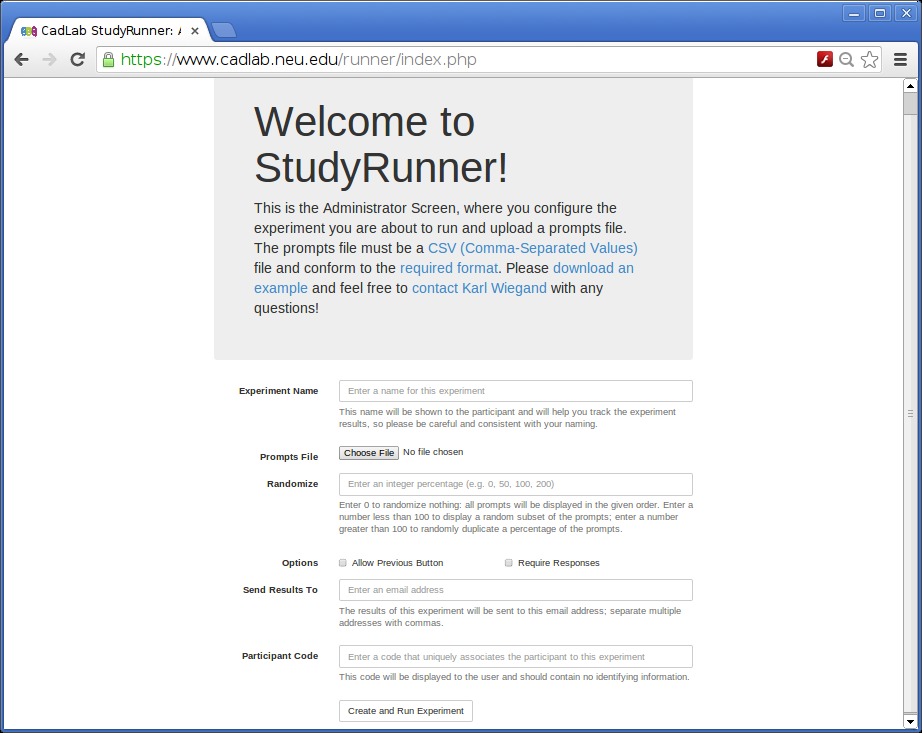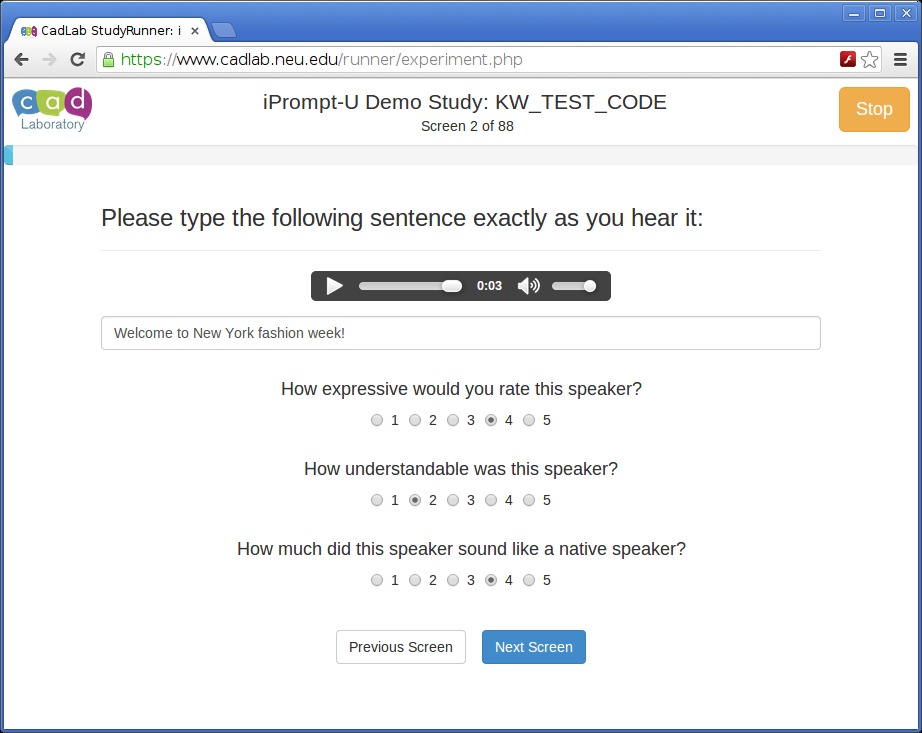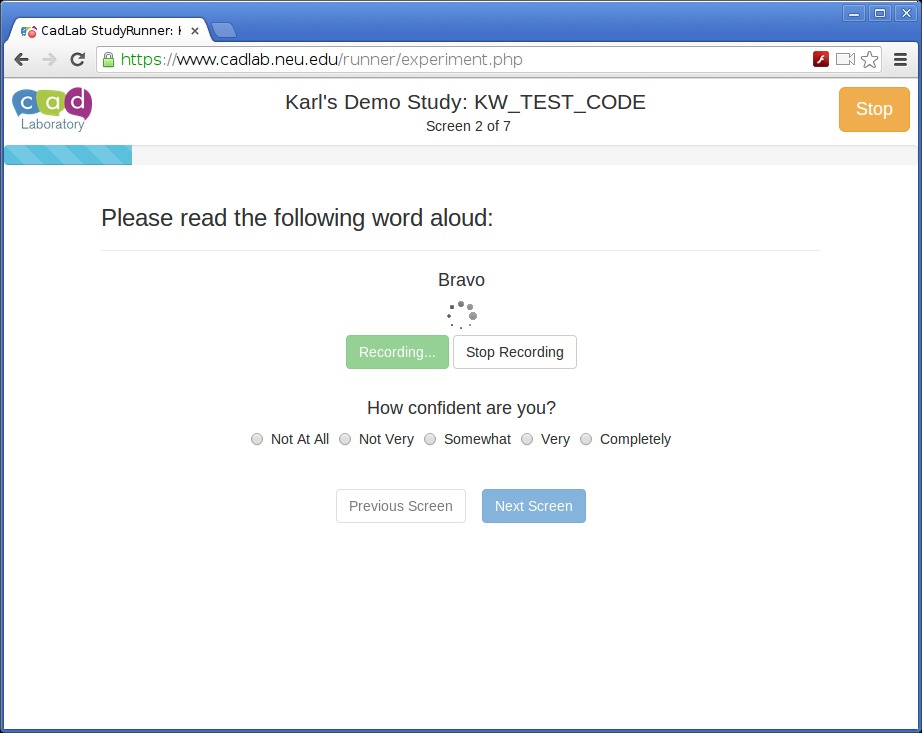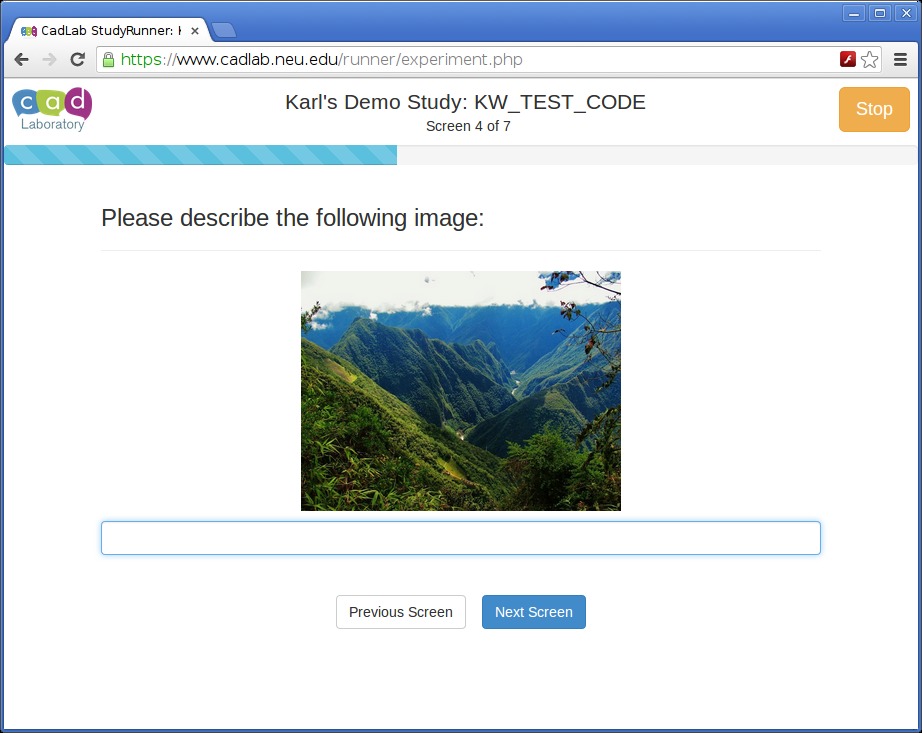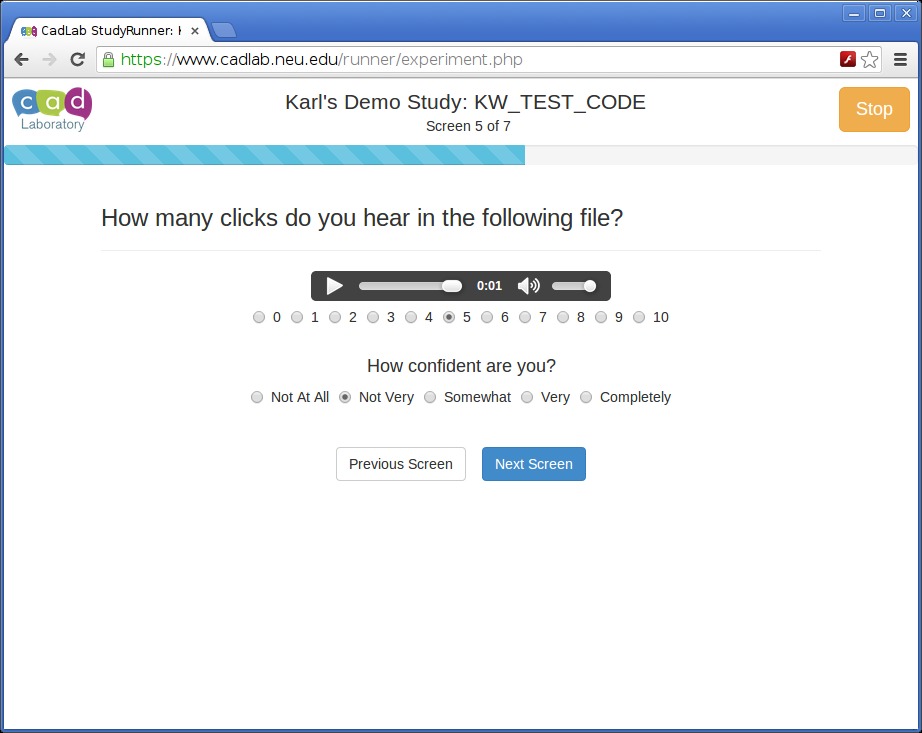StudyRunner
Organization
Communication Analysis and Design Laboratory, Boston, MA
Advisor
Background
StudyRunner is a part of the CadLab's research infrastructure.
Task
The CadLab hosts many different types of researchers who need to design and run systematically controlled user studies. These studies are often stimulus-response studies in which participants are presented with a visual or auditory prompt (e.g. written text, an image, a video, or an audio file) and are asked to provide a response that may be spoken or written (e.g. multiple choice questions, check boxes, or free text). The purpose of this project is to create and maintain a flexible system that can be used by any CadLab researcher to easily create and run a stimulus-response study.
Approach
Before StudyRunner, the CadLab used MatLab scripts that needed to be extensively customized for each new experiment. This approach required a MatLab installation on every computer used in a study and an available programmer to modify the MatLab scripts. I created an initial prototype of StudyRunner as a thick-client framework, but ran into problems maintaining a smooth installation process for all of our Windows, OS X, Linux, and Android platforms. The latest incarnation of StudyRunner is as a Web-based framework using HTML5. Researchers can design experiments in any spreadsheet program (e.g. Excel) using a simple, extensible syntax. To run a study, researchers upload the spreadsheet as a comma-separated values (CSV) file to StudyRunner, fill out a short form, and generate the experiment. Participants are systematically guided through the entire experiment in a user friendly interface, and the results are automatically backed up and delivered to the researcher electronically.
Technologies Used
Bootstrap, Bower, Git, Grunt, HTML5 and Web Audio API, JavaScript (jQuery), Less, Node.js, PHP, Sass

